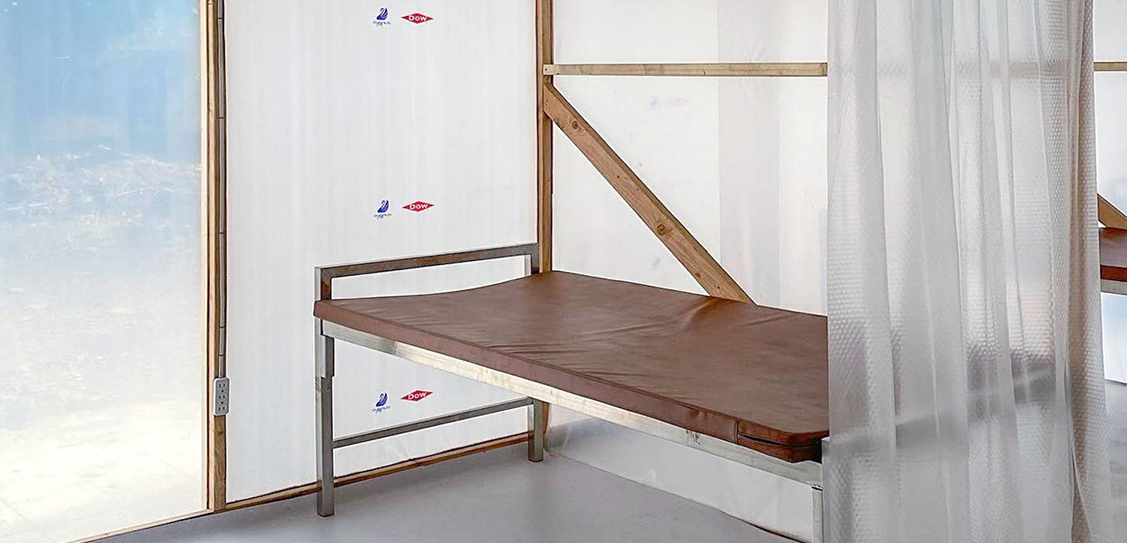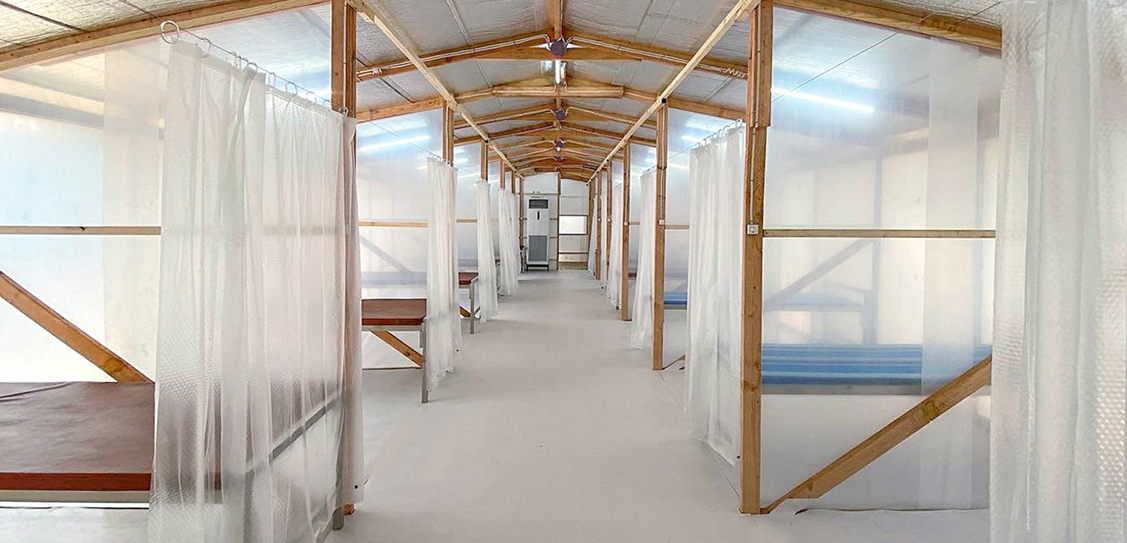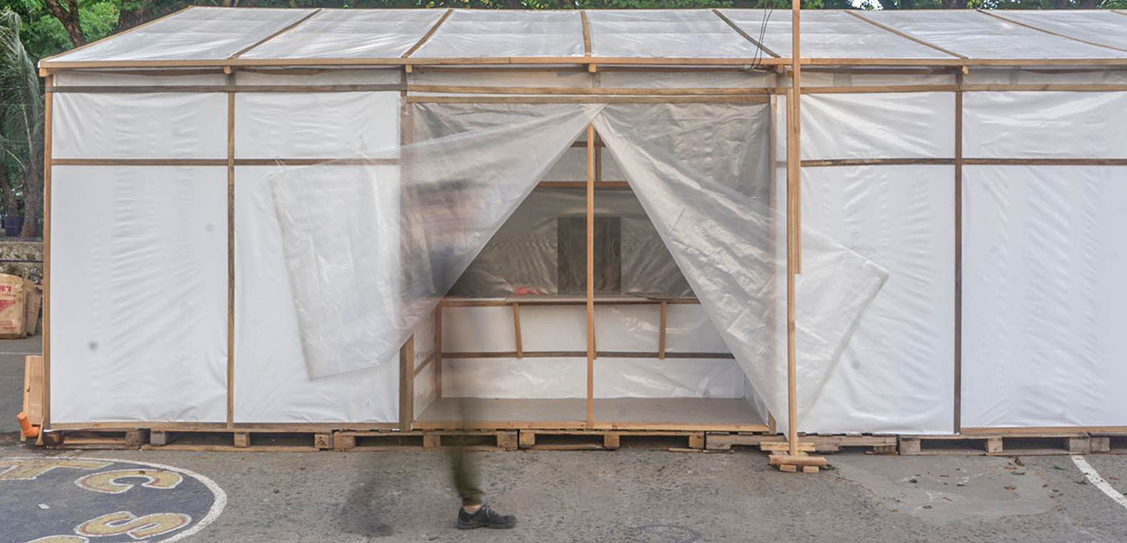The EQFs are temporary structures meant to augment and increase the capacity of hospitals.
As cities grew empty and hospitals reached full capacity, architects around the world have pondered on their role in the fight against Covid-19.
Confronted by the challenge of containment, principal architect of WTA Architecture and Design Studio William Ti collaborated with members of the community to quickly mobilize the construction of Emergency Quarantine Facilities (EQF).
Ti, who spearheaded the EQF initiative, drew inspiration and knowledge from WTA’s pavilion at the most recent Anthology Architecture and Design Festival.
Built with wood and enveloped in plastic, the WTA pavilion was rapidly redesigned and repurposed into six by 26-meter rectilinear facility equipped with 16 beds, two toilets, two showers, and designated donning and doffing areas.
Like its predecessor, the EQF prioritises speed, scalability and simplicity in its structure.
The motivation to actualise the idea comes from the fact that these facilities can control the rapid spread of the virus and flatten the curve in the process.
These facilities are used the next day sometimes even the same day they are finished.
The EQF, born out of ideas of ephemerality and impermanence, is a temporary structure meant to augment hospitals’ capacity by housing mild and asymptomatic Covid-positive patients.
Strategically planned to limit cross-contamination, patients and healthcare workers have designated entries and airflow is directed downwind from front to rear to prevent recirculation.
The facility can be lengthened or shortened depending on need and can likewise be aggregated in modules to accommodate many more patients.
Built with easy to use, flexible and readily-available materials, the EQF is easily replicable and scalable.
To respond to the urgent and burgeoning need for facilities, logistics and construction are simplified to hasten the build process.
The design’s first iteration in the Manila Naval Hospital was built in five days and has since grown into a network of 60 EQFs and 1,000 beds, with 22 completed and 26 in construction.
In a race where speed is of the essence, the 60 EQFs targeting to house a total of more than 1,000 beds were built from the March 29 until April 20.
Ti believes in democracy in design and has provided an open-source link for the EQFs drawings in the hopes that communities take up the same agency and quick mobility that has been displayed since the conception of this project.
At the heart of WTA’s work is a commitment to social architecture and the EQF captures the firm’s focus in programmatic deconstructivism.
It builds communities and finds ways to make our built environment more livable.
The EQFs are built on hospital parking lots and basketball courts, advocating social intimacy and social scale in architecture by strategically inserting the facility in accessible areas.
Lightweight both in aesthetics and materiality, the EQF serves the community and embodies architecture that is completely open and non-restrictive.



